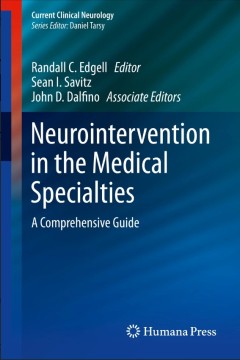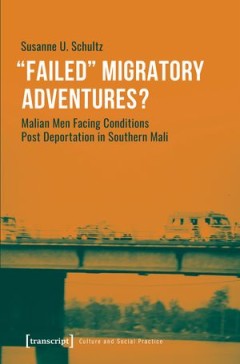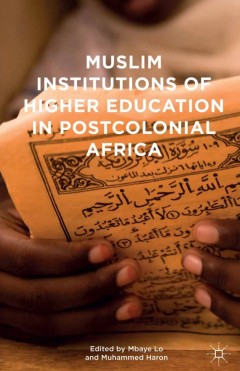Filter by

The “New Culture” From a Modern Perspective
Contemporary China, in an era of globalization and in the midst of transition, now faces both great opportunities and unprecedented challenges. People are more and more becoming “economic man,” “technological man” and “one-dimensional man,” and are increasingly losing the virtue, dignity and beauty of human nature. When humanity’s habitat grows smaller and smaller as economic, tec…
- Edition
- -
- ISBN/ISSN
- 978-3-662-48011-3
- Collation
- -
- Series Title
- -
- Call Number
- -

Gute Technik für ein gutes Leben im Alter?: Akzeptanz, Chancen und Herausfor…
Längst gibt es altersgerechte digitale Assistenzsysteme. Doch sind Umfang und Geschwindigkeit ihrer Verbreitung sowohl in Pflegeeinrichtungen als auch in privaten Haushalten weitgehend unbekannt. Informationen zu tatsächlich eingesetzten Systemen, realisierten Umsätzen und Marktvolumen sind kaum zu finden. Obwohl es viele Vermutungen hinsichtlich der Hindernisse bei der Einführung altersger…
- Edition
- -
- ISBN/ISSN
- 9783839454695
- Collation
- -
- Series Title
- -
- Call Number
- 301 GUT g

The Zakharov System and its Soliton Solutions
This book focuses on the theory of the Zakharov system in the context of plasma physics. It has been over 40 years since the system was first derived by V. E. Zakharov – and in the course of those decades, many innovative achievements with major impacts on other research fields have been made. The book represents a first attempt to highlight the mathematical theories that are most importan…
- Edition
- -
- ISBN/ISSN
- 978-981-10-2582-2
- Collation
- -
- Series Title
- -
- Call Number
- -

Neural Information Processing:22nd International Conference, ICONIP 2015, Ist…
The four volume set LNCS 9489, LNCS 9490, LNCS 9491, and LNCS 9492 constitutes the proceedings of the 22nd International Conference on Neural Information Processing, ICONIP 2015, held in Istanbul, Turkey, in November 2015. The 231 full papers presented were carefully reviewed and selected from 375 submissions. The 4 volumes represent topical sections containing articles on Learning Algorithm…
- Edition
- 1
- ISBN/ISSN
- 978-3-319-26554-4
- Collation
- XVII, 710
- Series Title
- Theoretical Computer Science and General Issues
- Call Number
- -

Neurointervention in the Medical Specialties
Neurointervention in the Medical Specialties is a first-of-its-kind reference that serves as a bridge between the neurointerventionalist and the physicians who most frequently look to these specialists for answers to some of the most intractable problems they face. Providing background on the wide range of diseases treated through neurointervention along with the indications and alternatives to…
- Edition
- 1
- ISBN/ISSN
- 1559-0585
- Collation
- XIII, 365
- Series Title
- Current Clinical Neurology
- Call Number
- -

Nematode Pathogenesis of Insects and Other Pests:Ecology and Applied Technolo…
Achieving a sustainable agriculture requires integrating advances in multiples disciplines, covering both fundamental and applied research in a common objective: enhancing crop health for better productions. This first volume of the Series “Sustainability in plant and crop protection” presents a comprehensive and multi-disciplinary compendium about the recent achievements in the use of ento…
- Edition
- 1
- ISBN/ISSN
- 978-3-319-18266-7
- Collation
- XVII, 531
- Series Title
- Sustainability in Plant and Crop Protection
- Call Number
- -

The Youth Experience Gap Explaining National Differences in the School-to-Wo…
“The education to work transition of young people is key to a successful work-life and to fight youth unemployment. The book provides an impressive outline of the facts and convincing insights of the potential causes. This offers a large and broader audience help to adjust properly to achieve a better life.” Klaus F. Zimmermann, IZA, Bonn, Germany This work points to the youth experienc…
- Edition
- -
- ISBN/ISSN
- 978-3-319-10196-5
- Collation
- -
- Series Title
- -
- Call Number
- -

Failed Migratory Adventures?: Malian Men Facing Conditions Post Deportation i…
The effects of the intra-African and European deportation regimes brought about since the European Union's externalization of its migration and development policy by transferring it to countries of sub-Saharan Africa remain largely understudied - especially their effects on people's everyday life after forced returns. Based on extensive field research, Susanne U. Schultz's book analyses the sup…
- Edition
- -
- ISBN/ISSN
- 9783839460092
- Collation
- -
- Series Title
- -
- Call Number
- 301 SCH f

Muslim Institutions of Higher Education in Postcolonial Africa
Muslim Institutions of Higher Education in Postcolonial Africa examines the colonial discriminatory practices against Muslim education through control and dismissal and discusses the education reform movement of the post-colonial experience.
- Edition
- 1
- ISBN/ISSN
- 978-1-137-55230-3
- Collation
- IX, 302
- Series Title
- -
- Call Number
- -

The World of Bereavement Cultural Perspectives on Death in Families
This visionary work explores the sensitive balance between the personal and private aspects of grief, the social and cultural variables that unite communities in bereavement, and the universal experience of loss. Its global journey takes readers into the processes of coping, ritual, and belief across established and emerging nations, indigenous cultures, and countries undergoing major upheavals…
- Edition
- -
- ISBN/ISSN
- 978-3-319-13945-6
- Collation
- -
- Series Title
- -
- Call Number
- -
 Computer Science, Information & General Works
Computer Science, Information & General Works  Philosophy & Psychology
Philosophy & Psychology  Religion
Religion  Social Sciences
Social Sciences  Language
Language  Pure Science
Pure Science  Applied Sciences
Applied Sciences  Art & Recreation
Art & Recreation  Literature
Literature  History & Geography
History & Geography